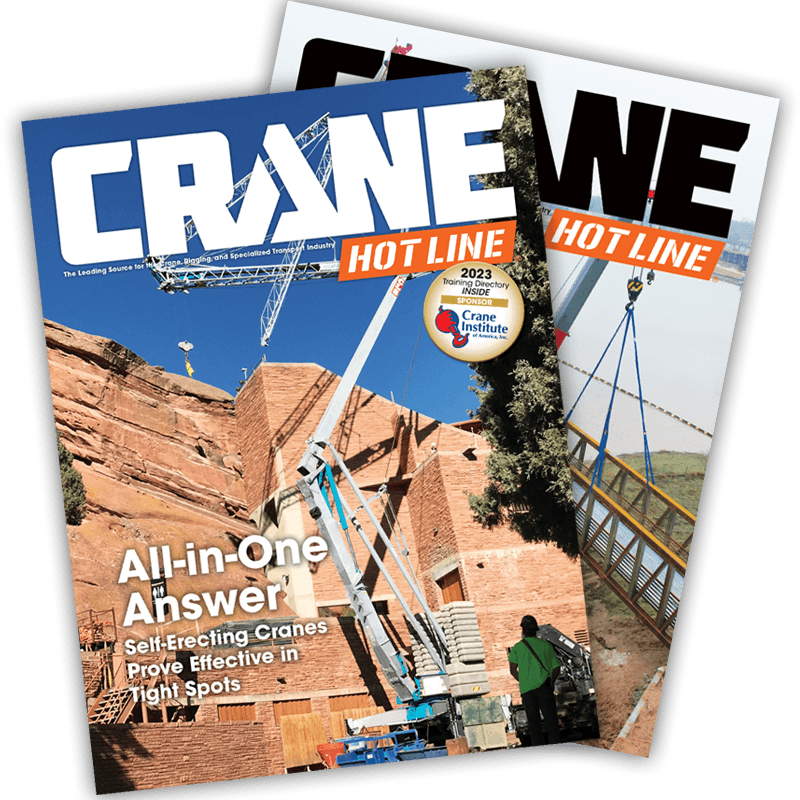Northwest Crane Uses Big Liebherr Mobile Crane for Wind Turbine Maintenance
Enlarge Image
February 27, 2014 - After taking delivery of its new 827-U.S. ton telescopic hydraulic crane in late December, Northwest Crane Service reports it has completed its first projects with Liebherr LTM 1750-9.1.

Northwest Crane's
LTM 1750-9.1 telescopic crane
Andy Hodges, owner of the Oklahoma lifting specialist company, first saw the LTM 1750-9.1 on a visit to the Liebherr factory in Germany in 2012.
“This machine has the capability to complete projects that previously would have required a crawler crane,” said Hodges. “Crawler cranes are still an important part of our fleet, but to have a telescopic crane on rubber tires with such lifting capabilities adds a whole new aspect to what we can offer our customers.”
He said it would enable Northwest Crane to mobilize more quickly and carry out lifting projects more efficiently. “For short-term, in-and-out, heavy lifting projects, this is a great solution,” he added.
Wind projects
Northwest Crane Service has completed several wind turbine maintenance projects with the LTM 1750-09.1 and has more of the same scheduled.
Northwest Crane Service has been involved in the wind power generation industry since the first wind farm was erected in Oklahoma, and it now works nationwide in this market sector. Demand for this crane’s capabilities is also coming from petrochemical plant and oil refineries. “This crane has definite advantages across a wide range of industries,” Hodges said.
The main boom of the LTM 1750-9.1 extends to 171 ft. With jib extensions and the telescopic boom Y-guying system, it provides a maximum lifting height of 505 ft.
It is mounted on a nine-axle carrier (18x8x18) powered by an eight-cylinder Liebherr diesel engine rated at 677 HP. It can travel at speeds of up to 50 mph. The four rear axles are actively steered electro-hydraulically and speed-dependent. In crab steering mode, all nine axles are steered, so there is no need for any axles to be raised.
In Northwest Crane Service’s home state of Oklahoma, permits can be obtained to drive the LTM 1750-9.1 with full hydraulic main boom installed on the carrier.
Inaugural job
The first job for this crane was replacing the gearbox of a 1.5 MW wind turbine that stands 262 ft. high.
The crane arrived on site on a Monday morning accompanied by just eight ancillary trucks for boom system extension components, counterweight sections and rigging gear. By the end of the day, it was all rigged up and ready to work.
The actual lifting operation—removing the old gearbox and replacing it with a new one—was carried out the next day. By Wednesday mid-afternoon, the crane had been completely stripped down and ready to head home with all eight trucks also packed up.
Andy Hodges said that prior to having the LTM 1750-9.1 in his fleet, a crawler crane would have been used for this particular job. The crawler would have taken much longer to set up and tear down, adding cost to the project.
“For a crane of its capacity, the simplistic design of the Liebherr LTM1750-9.1 allows for an extremely efficient rig up and rig down process,” he says.
Northwest Crane Service operates an all-Liebherr crane fleet, from the 77-U.S. ton (70 tonnes) capacity LTM 1070-4.2 up to the new 827 U.S. ton (750 tonnes), with both LTM all-terrain models and LR crawler cranes.
“We believe Liebherr cranes to be the best for our customers and it allows a commonality for our operators and technicians,” Hodges said. “Having the LTM 1750-9.1 in our fleet now lets us offer a more complete package of options to our customers.”
Northwest Crane Service personnel received training in Houston prior to delivery of the new crane, as well as additional training after the crane was delivered to its Oklahoma City yard. Being already familiar with the Liebherr LICCON 2 operating systems and crane designs, there were no difficulties adjusting to the new LTM 1750-9.1.
One new feature that particularly appeals to the operators is the Bluetooth remote control capabilities that allow them to be more directly involved with the assembling of the crane.


